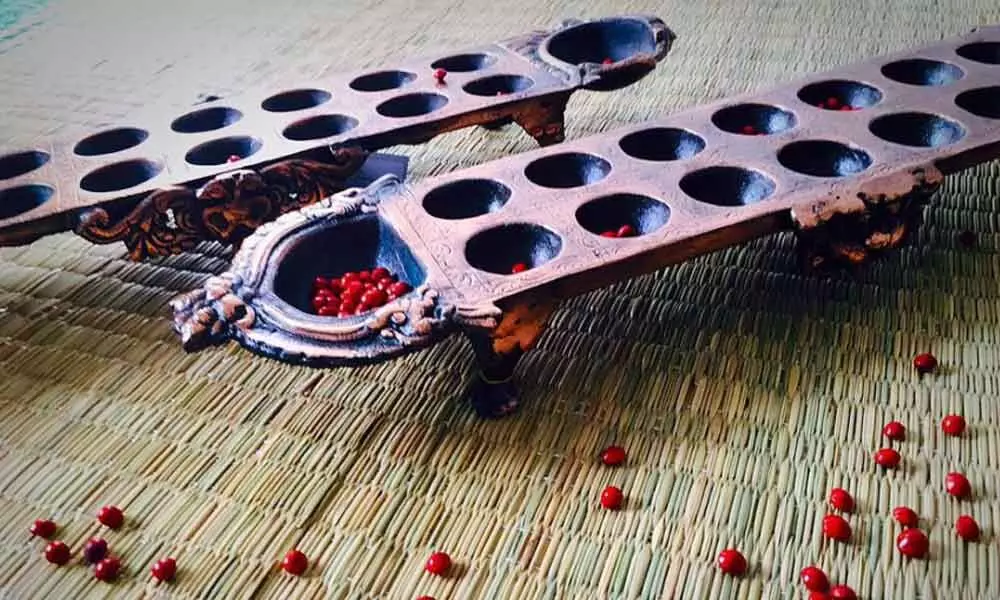It's time to bring back some fun
As we struggle through the difficult days of social distancing and lock down, staying indoors seems to be the safest thing to do. We not only need to find ways to engage children, but also find ways to keep our spirits high amidst crisis. Seetha Anand Vaidyam takes you through some of the age-old games that can bring back some fun into our lives, the nostalgic way
Very often the ability to learn is credited to the brain. However, many scientific studies show that proper physiological development such as Gross and Fine Motor Skills; Eye – Hand Coordination; Eye Tracking; Crossing of the Brain etc., are fundamental prerequisites for learning. Reading, writing, mathematical ability – can all be improved by working on these basic neuro physiological processes. And these are effectively activated while playing games. With children stuck at home, and constantly complaining of boredom, because they cannot step out to play, what best time than now to get back to the beautiful games of yore. While rejuvenating the mind, the games also serve to keep the kids entertained while you reel back into nostalgia.
During the current times of stress, it is also important to lighten the mind and keep children humoured. Some traditional Indian indoor games are not just fun but also therapeutic and educative. A lowdown on some simple ones -
Pallanguzhi or Vamaguntalu
(suitable for 5 years to adults)
This is an ancient South Indian game played by two players.
What you need
A board with 7 holes on opposite sites.
Shells, seeds – about 6 to 12 for each hole
In case you do not have such a board, you can just choose to place 7 small bowls on each side and play with tamarind seeds inside them.
How to play
There are many variants of the game.
Kasi attam
The middle hole ( leaving 3 each on either side) is called Kasi or the bank and one single seed or shell is placed in it the other holes may have 6, 8, 10 or 12 seeds each. The players cannot empty the kasi or the bank. You can remove seeds from one hole of your side and start dropping from the next adjacent hole till the last seed. Then take seeds from the next hole where you ended. In case the next hole is empty then you can collect the seeds from the hole next to it and add it to your kitty and keep aside. If the next two holes are empty then the opposite player gets the chance to play. When the hole just before the kasi or bank is empty then you stake a claim to the contents of the kasi at the end of the game. Sometimes both players get a chance to share the contents of the kasi. The one who has more number of shells or seeds is the winner. Continuous games can be played with empty holes if a player has less seeds than the required number to fill them to start a new game. Sometimes the kasi or the bank is not won in one round and losers who hit the kasi in the 2nd round may prove to be eventual winners.
This game helps in developing
l Fine Motor skills
l Eye hand coordination
l Mental math skills
l Concentration
l Patience
l Sporting Spirit
l Focus and alertness
l Memory
Paramapadha Sopanam
( suitable from 4 years to adults)
This is the Indian version of Snakes and Ladders that can be played by any number of players, ideally upto 4 or 5 players. Traditionally this was played on quarantine days such as during an eclipse or on days like Ekadashi or Shivarathri in order to stay awake whole day and night.
What you need
Rolling dice
A chart with numbers below to above from 1 to 100 . Each number has a box with a picture of either a snake or a ladder or a description of either a pleasurable or a painful activity or experience.
How to play
Each player rolls the dice and moves his/her marker on the chart based on the number he/ she has rolled on the dice. If the box has a ladder he/she climbs, if it has a snake he/she slides down, otherwise he/ she remains in the same box. The one to reach the topmost box that is 100 is the winner.
This game is just based on chance and luck.
l This helps younger children learn number sequence
l Hand eye coordination
l Eye Tracking
l Reading
l Patience and acceptance
l Sequencing
l Keeps players occupied in fun way for long hours
5 Shells
( suitable for ages 7 to adults)
This is a very simple game that can be played anytime with easily available stones or shells
What you need
5 or 7 pebbles or cowrie shells
Smooth Surface or floor space to play
How to play
This can be played by 4 or 5 players
The player rolls out the pebbles or shells. He then takes one shell and tosses it up and catches it. Then attempts to hold those shells or pebbles in hand and catch the pick the remaining pebbles and toss them and catch them in the same manner. In round 2 the player has to toss one pebble and gather two pebbles or shells at a time. Then 3 and finally all the shells or pebbles at one go and toss then up and catch them.
This game helps in developing
l Fine Motor skills
l Eye hand coordination
l Eye tracking
l Muscle tone
l Space orientation
l Focus
l Patience
l Inhibits palmar reflex
Hop Scotch
(ages 6 upwards)
This is an outdoor game but can be played indoors too using a chalk to draw the required boxes. This is a game that can aid gross motor skillls, balance and eye tracking. It can also improve space orientation.
Ludo and Puli-Meka or Tiger and Goat are also other traditional Indian indoor games that can be played with simple items found at home. Even if you do not have these on a board or chart, they can be drawn on the floor.
The writer is the founder of Ananda, a foundation for Holistic and Healthy Learning & Living works in the areas of Education, Health and Environment






















